Summer evenings bring a symphony of sounds that fill the air as temperatures rise and nature comes alive. Among these sounds, one stands out for its remarkable volume and persistence — the call of the cicada. While many insects produce sounds, cicadas hold the extraordinary distinction of being the loudest insects on Earth. These remarkable creatures can produce sounds reaching over 100 decibels, comparable to a chainsaw or motorcycle engine, despite their relatively small size. In this article, we’ll explore the fascinating world of cicadas, their record-breaking sounds, and why they “scream” throughout the summer months.
The Decibel Champions of the Insect World
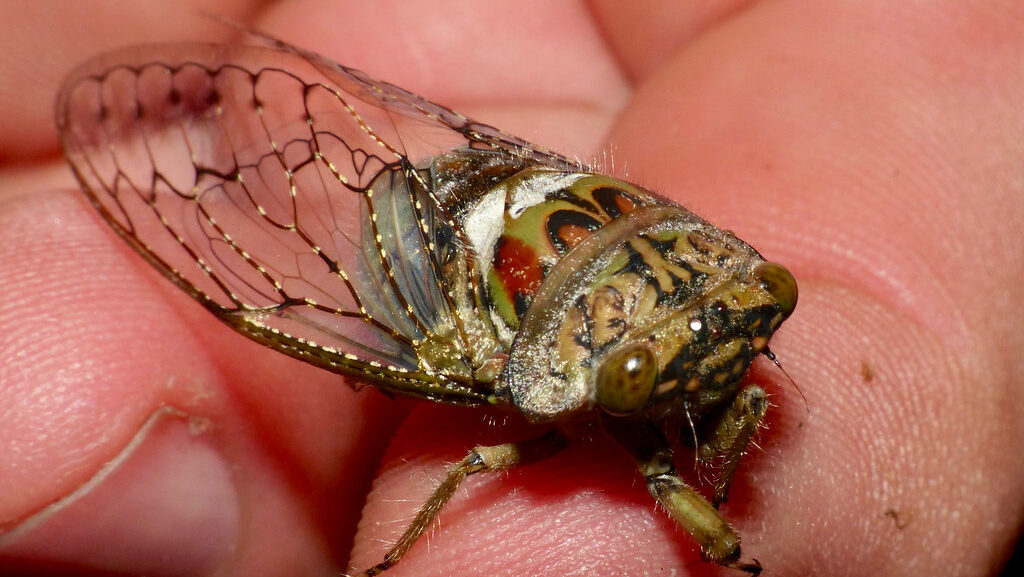
When it comes to sheer volume, the African cicada species Brevisana brevis holds the official record as the loudest insect on Earth. This remarkable creature can produce sounds measuring up to 106.7 decibels when measured at a distance of 50 centimeters. To put this in perspective, that’s louder than a jackhammer (95 dB), approaching the volume of a rock concert (110 dB), and well above the threshold where prolonged exposure can cause hearing damage in humans (85 dB). Not far behind are several North American cicada species, including the Neotibicen pronotalis, which can reach approximately 105.9 decibels. What makes these measurements even more impressive is the small size of the cicada relative to the enormous sound it produces, representing one of the most efficient sound-producing mechanisms in the animal kingdom.
The Anatomy of Sound Production

Cicadas generate their extraordinary sounds through specialized organs called tymbals, which are located on either side of their abdomens. These ribbed membranes work somewhat like the lid of a tin can — when muscles rapidly contract and relax, they cause the tymbals to buckle inward and spring back, creating clicking sounds. What’s remarkable is the frequency of these contractions, which can occur hundreds of times per second, producing the continuous drone we associate with cicadas. The sound is further amplified by the cicada’s largely hollow abdomen, which functions as a resonance chamber, similar to how an acoustic guitar amplifies string vibrations. Additionally, male cicadas possess specialized structures that help prevent hearing damage from their own calls, protecting their auditory systems while they produce these deafening sounds.
Male Cicadas and Their Mating Calls

The extraordinary sounds cicadas produce serve a critical purpose in their reproductive cycle — they are mating calls produced exclusively by male cicadas. These acoustic advertisements are designed to attract female cicadas of the same species, who recognize the specific pattern and frequency of their potential mates’ calls. Different cicada species produce distinctly different calls, which helps prevent hybridization between species that might emerge simultaneously. The remarkable volume of these calls serves a strategic purpose, allowing males to broadcast their availability over long distances, sometimes up to a mile away in optimal conditions. Female cicadas remain silent but respond to attractive males by producing subtle wing flicks that create a soft clicking sound, initiating the courtship process.
Why Summer Becomes a Cicada Symphony

Cicadas are most vocal during the warmest months of the year because temperature plays a crucial role in their life cycle and activity levels. As ectothermic organisms, cicadas rely on external heat sources to warm their bodies and achieve the metabolic rates necessary for their activities, including sound production. Summer provides the optimal temperature range of approximately 75-95°F (24-35°C) for their tymbals and associated muscles to function at peak efficiency. Additionally, their emergence is precisely timed to coincide with seasonal conditions that support their brief adult life stage, including adequate tree sap for feeding and appropriate soil temperatures for egg development after mating. The chorus of cicadas typically peaks during the hottest parts of the day, creating the soundtrack many associate with the height of summer.
Annual vs. Periodical Cicadas
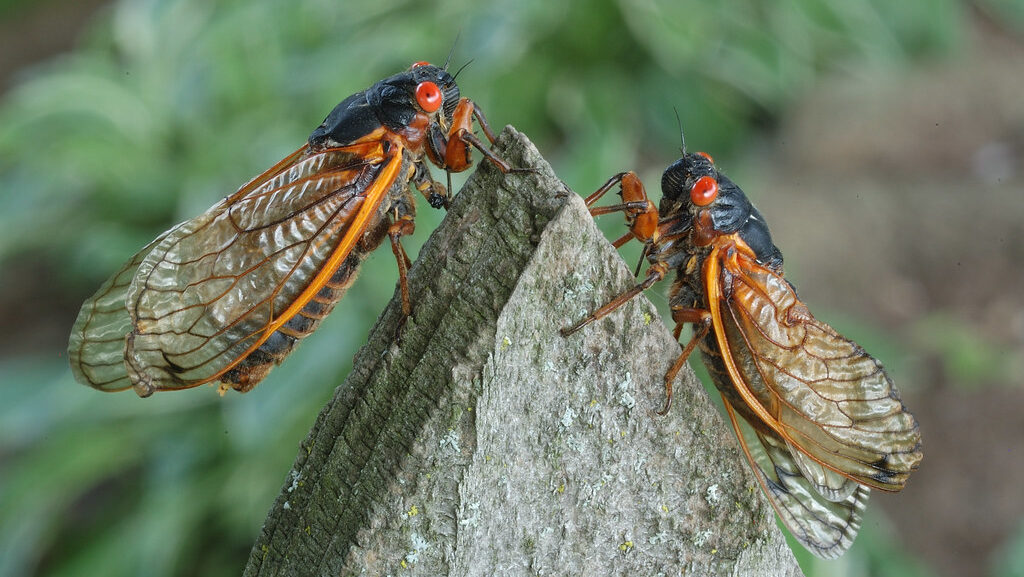
Cicadas fall into two main categories that determine when and how frequently we hear their summer songs: annual cicadas and periodical cicadas. Annual (or “dog-day”) cicadas emerge every year during the warmest months, typically July and August in North America, and are responsible for the familiar summer sounds in many regions. These species have overlapping generations with life cycles of 2-5 years, but because they’re not synchronized, some portion of the population emerges each summer. In stark contrast, periodical cicadas emerge in massive synchronized broods after spending either 13 or 17 years developing underground. When these periodical broods emerge, they create an overwhelming cacophony that can dominate the soundscape, with population densities reaching over a million cicadas per acre in some areas, producing what many describe as an almost deafening wall of sound.
The Science Behind Cicada Synchronization

The remarkable synchronization of periodical cicada emergences represents one of nature’s most precise biological timekeeping mechanisms. These insects count annual cycles through changes in the xylem fluid of tree roots, which varies with seasonal growth patterns. Research suggests they track these cycles through chemical changes in their bodies that correspond to the tree’s seasonal cycles. The evolutionary advantage of their prime-numbered cycles (13 or 17 years) appears to be predator avoidance, as these cycles minimize the chance of synchronizing with predator population booms. When soil temperatures reach approximately 64°F (18°C) at a depth of 8 inches, the mature nymphs begin their emergence, typically creating a spectacle where millions emerge within days of each other after years of separate development. This extraordinary synchronization maximizes their collective sound impact and creates a “predator satiation” effect where their sheer numbers overwhelm potential predators.
Regional Variations in Cicada Songs
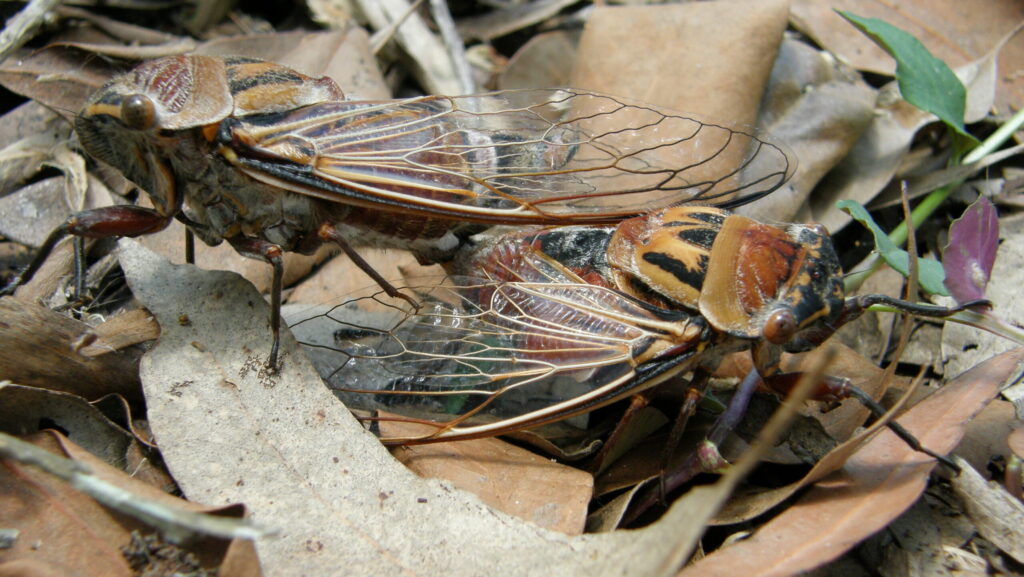
Cicada calls vary dramatically across regions and species, creating distinctive soundscapes that characterize different parts of the world. In the eastern United States, the periodical Magicicada species produce a unique synchronized chorus often described as a pulsating, alien-like sound that rises and falls in waves. Australian cicadas, including the aptly named “Double Drummer” (Thopha saccata), create some of the loudest insect sounds on the continent, with distinctive rhythmic patterns. Mediterranean cicadas like the Cicada orni produce a more continuous, high-pitched buzz that has been immortalized in classical poetry and literature for thousands of years. Remarkably, some research indicates regional “dialects” even within the same species, where calls may vary slightly in pattern or frequency between geographically separated populations, potentially leading to speciation over evolutionary time.
Cicada Sounds in Human Culture

The distinctive sounds of cicadas have woven themselves into human culture across continents and throughout history. In ancient China, cicadas symbolized rebirth and immortality, with jade carvings of cicadas placed in the mouths of the deceased to ensure life after death. Greek literature, particularly in Homer’s Iliad, praised cicada songs as sweet and melodious, with the insects themselves representing eloquence and music. Japanese haiku poetry frequently references cicada sounds (semi no koe) as a classic seasonal motif representing the height of summer. In modern times, cicada sounds have been sampled in musical compositions, used in film soundtracks to establish summer settings, and even inspired technological innovations in sound design. The cultural interpretations range widely—from representing persistence and patience in some traditions to being considered noise pollution in some urban environments.
Ecological Importance of Cicada Calls

Beyond their reproductive purpose, cicada calls play several important ecological roles in their environments. Their loud choruses temporarily alter the acoustic environment of forests and can affect the communication patterns of other species, with some birds adjusting their songs to avoid acoustic competition during peak cicada activity. The timing of cicada calls serves as a phenological marker that signals specific seasonal thresholds, with some agricultural traditions using cicada emergence to time planting activities. For many predators, including birds, mammals, and other insects, cicada calls serve as auditory beacons that guide them to an abundant food source. Additionally, research suggests that the combined thermal output from millions of sound-producing cicadas can slightly elevate local temperatures in areas of high density during mass emergences, potentially affecting microclimate conditions for other forest organisms.
Predator Deterrence Through Sound
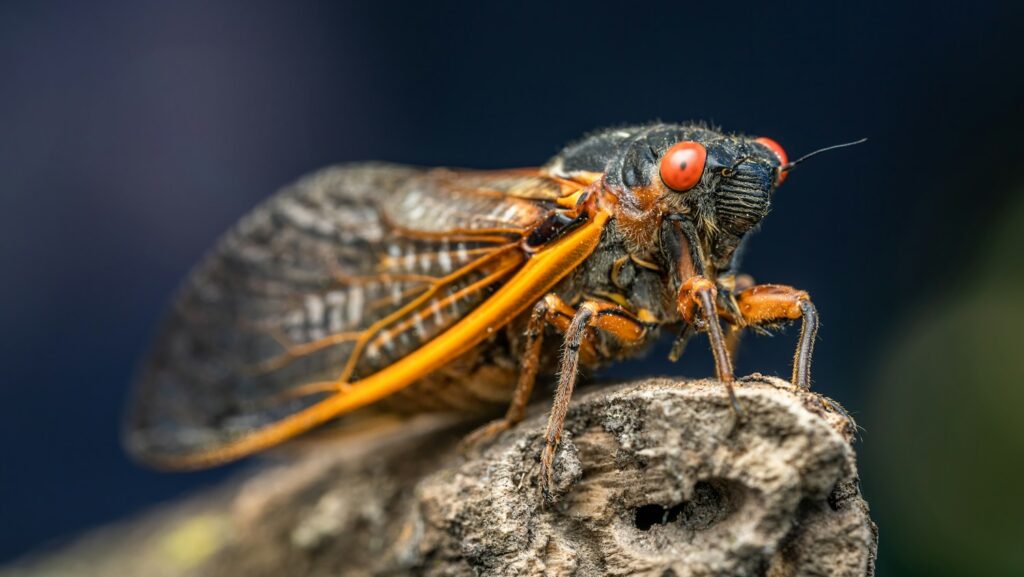
While cicada calls primarily function as mating signals, they also serve as effective predator deterrents through several mechanisms. The sheer volume and unexpected nature of cicada sounds can startle potential predators, providing crucial moments for escape. Some species can modulate their calls when threatened, producing sharp, erratic “distress calls” that differ from their regular mating songs and may function specifically to confuse predators. When cicadas emerge in massive numbers, their synchronized calling creates an auditory confusion effect that makes it difficult for predators to isolate individual insects, similar to the visual confusion effect of schooling fish. Research has also documented that some predatory birds struggle to maintain hunting efficiency amidst the intense sound environment of a cicada chorus, as the noise interferes with the birds’ ability to communicate and coordinate hunting strategies.
Human Reactions to Cicada Noise

Human responses to cicada sounds span a remarkable spectrum from appreciation to annoyance. For many people with rural or suburban upbringings, cicada songs evoke powerful nostalgia, representing the essence of summer evenings and creating what psychologists call “autobiographical sound memories” that connect people to specific times and places in their lives. Conversely, in areas experiencing periodical cicada emergences, the extreme volume can disrupt outdoor activities, interfere with sleep, and even impact outdoor business operations like restaurant patios or wedding venues. Sound sensitivity conditions like misophonia or hyperacusis can make cicada sounds particularly challenging for some individuals. Interestingly, habituation studies show that most people adapt to cicada noise within 3-5 days of continuous exposure, with the brain gradually filtering out the consistent background sound—a phenomenon that explains why long-term residents of cicada-rich areas often claim they “don’t even notice them anymore.”
Climate Change Effects on Cicada Choruses
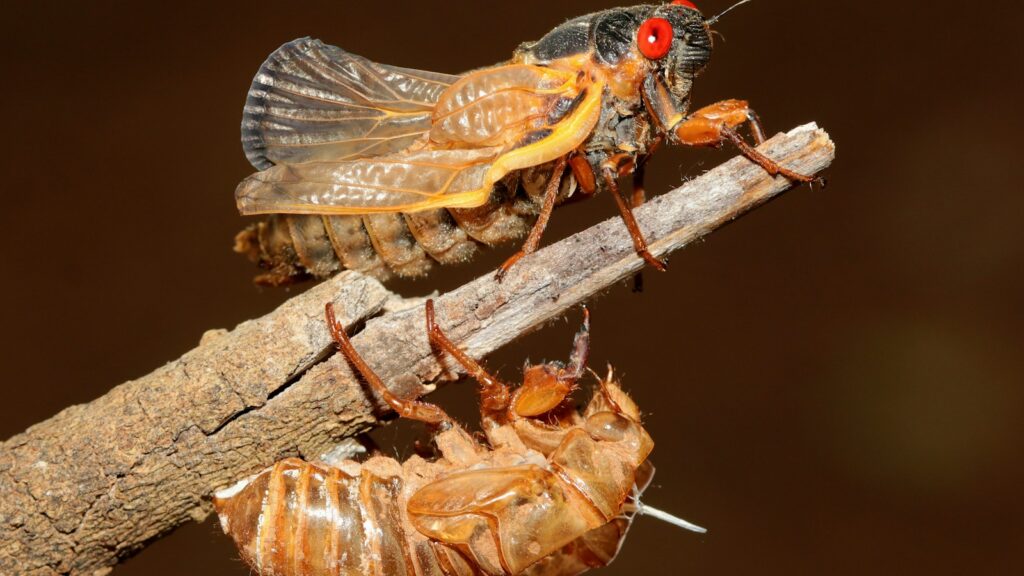
Climate change is beginning to alter the timing, distribution, and intensity of cicada choruses around the world. Rising temperatures are shifting emergence patterns, with some annual cicada species emerging earlier in the season and remaining active for longer periods. Research tracking periodical cicada emergences over the past century has documented accelerated development in some broods, with emergences occurring up to two weeks earlier than historical records would predict. Geographic ranges are also shifting, with some species expanding northward in both North America and Europe as warming temperatures make previously unsuitable habitats viable. Scientists are particularly concerned about potential desynchronization in periodical cicada broods, as climate variability could disrupt the environmental cues that maintain their remarkable synchronicity. The acoustic impact of these shifts extends beyond cicadas themselves, potentially creating ripple effects through ecosystems as the summer soundscape changes in timing and composition.
Recording and Studying Cicada Acoustics

The extraordinary sounds of cicadas have attracted specialized scientific attention, creating the interdisciplinary field of cicada bioacoustics. Researchers use sophisticated equipment including ultrasonic microphones, spectrograms, and multi-directional recording arrays to capture and analyze the complex acoustic properties of different cicada species. These studies have revealed remarkable details, including precise sound frequencies, amplitude modulation patterns, and even the directional properties of sound propagation from cicada tymbals. Acoustic fingerprinting technology now allows scientists to identify cicada species based solely on their calls, enabling population surveys without physical specimen collection. The engineering implications of cicada sound production have inspired biomimetic applications, with researchers studying cicada efficiency for designing everything from improved acoustic systems to noise-cancellation technologies. Citizen science projects have also emerged, with smartphone apps allowing the public to record and submit cicada calls, creating comprehensive acoustic maps that track species distribution and emergence patterns across continents.
Coexisting with Summer’s Loudest Insects

For those seeking peaceful coexistence with cicadas during their noisy summer performances, several practical approaches can help manage the acoustic impact. Understanding the temporary nature of cicada choruses—typically lasting 4-6 weeks for annual species and 4-8 weeks for periodical emergences—provides perspective that the noise, while intense, is not permanent. Simple home adaptations like weatherstripping windows, using white noise machines, or installing temporary acoustic panels can significantly reduce sound penetration during peak cicada seasons. For outdoor activities, choosing locations with less tree cover can substantially reduce exposure, as cicadas concentrate in wooded areas. Rather than fighting against the inevitable summer soundtrack, many people find that learning about cicada biology and ecological importance fosters appreciation rather than annoyance. Conservation organizations suggest this mindful approach, emphasizing that cicada choruses represent an ancient and essential ecological process that has been part of summer soundscapes for millions of years before human civilization.
The remarkable summer screams of cicadas represent one of nature’s most impressive acoustic phenomena. These small insects produce extraordinary volumes that serve critical biological functions while creating the defining soundtrack of summer across much of the world. From their specialized sound-producing anatomy to their precisely timed emergences, cicadas demonstrate sophisticated adaptations that have evolved over millions of years. As we experience their calls each summer, we’re connecting with an ancient natural cycle that predates human civilization and continues to influence our cultural and ecological landscapes. Whether perceived as beautiful music or bothersome noise, the cicada’s summer symphony remains one of the most remarkable acoustic achievements in the natural world—a living reminder of nature’s ingenuity and persistence that literally resonates through our environment.
